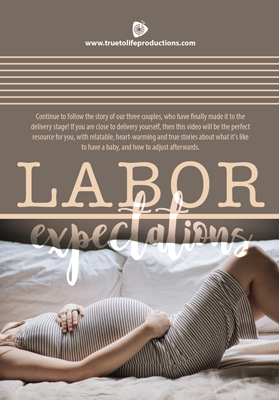

Labor Expectations
THREE MINUTE RECAP.
They did it! Couples Laila and Joseph, Mikayla and Kyle, and Mariah and Tyler each had their babies! I bet you can’t wait to see how it all turned out in this final video! Join these three couples as their pregnancies come to an end and experience labor and delivery with them as they have their babies. Topics include: • Mariah • Tyler • Laila • Joseph • Mikayla • Kyle • labor • contractions • pushing • epidural • pitocin. Closed Captioning English/Spanish
FactSheet
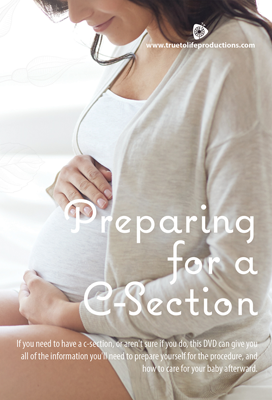

Preparing for a C-Section
THREE MINUTE RECAP.
When you were first pregnant, you might not have thought too much about the birth. After all, it felt like it was a hundred years away. But now, as you near the end, you may have been told that you’re having a C-section, or maybe you’re concerned that your delivery could turn into a C-section in the end. And you may be wondering, What will it be like? In this video, we talk about what you can do to prepare for a C-section that will make healing and caring for your baby easier. We’ll also talk about the procedure to help you understand what will happen on the big day! Topics include: • C-section • labor delivery • breech • surgery • anesthesia • birth plan • meals prepared ahead. Closed Captioning English/Spanish
FactSheet


Getting Ready: Nesting
THREE MINUTE RECAP.
It’s a mystery. Birds do it, hamsters do it, and other animals do it, too—including humans. Nesting: Is it an animalistic, science-proven instinct, or just a big belly–felt eureka moment? Women in their last month or few weeks of pregnancy are often spurred on by bursts of energy, working sometimes at a frenzied pace, to get ready for a new baby. In this video, we will look at what nesting is and why it happens. Does it lead to labor, or is it just an old wives’ tale? Before you get out your broom and mop, let’s examine some safe ways to get your nesting mojo on—and when that mojo goes too far. Topics include: third trimester • nesting • energy levels • cleaning • organizing • cautions • baby’s room • baby equipment • making meals ahead • contact list • packing a hospital bag • overnight bag • longer-term bag • car seat. Closed Captioning English
FactSheet
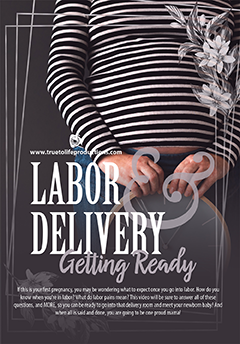

Labor and Delivery: Getting Ready
THREE MINUTE RECAP.
Giving birth is tough, but having a baby is amazing! You might be wondering what to expect from labor and delivery. In this video, we’ll talk about three important things you need to know as you approach your baby’s birth: 1. How childbirth works, including why you have pain in labor; 2. The five clues that tell you labor is here; 3. The four stages of labor and what to expect in each. You can do this, and we’re going to help you! And when it’s all over, you’ll be so proud of what you’ve accomplished in giving birth. Topics include: • pain • childbirth • signs of labor • lightening • lose mucus plug • water breaking • lower back and belly pain • labor contractions • timing contractions • preterm labor • stages of labor • early or latent phase • crowning • active phase • transition phase • pushing and delivery • expelling the placenta • postpartum period • Braxton-Hicks. Closed Captioning English/Spanish
FactSheet
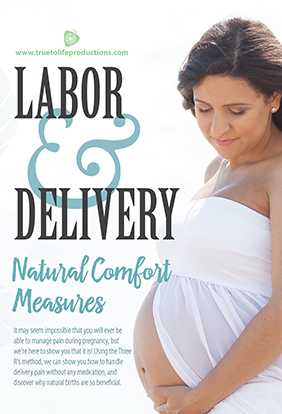

Labor and Delivery: Natural Comfort Measures
THREE MINUTE RECAP.
Pain in childbirth can feel pretty scary. You might wonder, Can I handle it?! What if I can’t? In this video, we talk all about managing pain the natural way. That’s right—without any pain medication. You can do this! You’ll learn about the three Rs to help you manage pain: relaxation, ritual, and rhythm. Then we discuss various natural comfort techniques to help you lessen the sensation of pain. We also discuss the benefits to a more natural birth, and why learning them is helpful, even if you’re planning on having the epidural. Topics include: • natural birth • natural comfort measures • birth experience • pain • relaxation • rituals • rhythm • massage • counterpressure • positions • hydrotherapy • room environment • support person. Closed Captioning English/Spanish
FactSheet


Labor and Delivery: Medical Pain Relief, Interventions, and Procedures
THREE MINUTE RECAP.
Having a baby is hard work, and choosing how you manage your pain is important. You get to choose! Do you want to take away some or most of the pain? You should know that choosing a medicated option will lead to certain other interventions and procedures. In this video, we discuss your medical pain-relief options, the interventions to which they lead, and some of the medical procedures you might face in childbirth. We’ll show you how to make great decisions in the moment using the B.R.A.I.N. method so you have the best birth experience possible. Topics include: • B.R.A.I.N. • benefits • risks • alternatives • no • not now • medical pain relief • narcotics • epidural • spinal block • nitrous oxide • sterile water injections • medical procedures • interventions • induction • stripping membranes • pitocin • fetal monitoring • breaking bag of water • episiotomy • forceps • vacuum. Closed Captioning English/Spanish
FactSheet
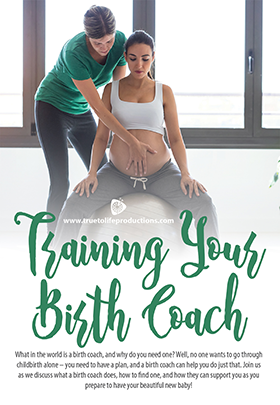

Labor and Delivery: Training Your Birth Coach
THREE MINUTE RECAP.
Having a baby is huge . . . and likely not something you want to do alone. Research has shown that when you have one or two support people by your side, you are more likely to stick to your birth plan and have fewer interventions. And it’s just nice having someone there to help. In this video, we’ll talk about what a birth coach does, whom to choose, and how to train them so you have the best birth experience possible. Topics include: • birth coach • delivery • labor • support • birth plan • support person • emotional support • communicator • your partner • doula • friends • family • flexible • patient • encourager • childbirth classes. Closed Captioning English/Spanish
FactSheet
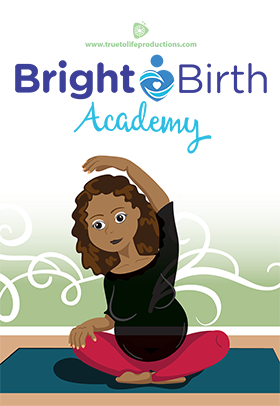

Lesson 1: You Are In Control
THREE MINUTE RECAP.
Congratulations, you’re getting so close to holding your sweet baby! Taking a birth class is a great way to prepare for the labor and delivery you’ll soon be experiencing. When it comes to your child’s birth, you are in control. It will affect your physical, emotional, mental, and spiritual health. For this reason, you’ll want to give careful thought to planning your birth. This first course will discuss the BrightBirth plan, labor expectations, and finish up by talking about your support team. Purchase optional Facilitator Guides and Participants Workbooks here. Topics include: Childbirth, Labor, Delivery, Hospital, Birthing Center, Doctor, Nurse Midwife, Certified Midwife, Insurance, Support People, BrightBirth Closed Captions: English/Spanish
FactSheet
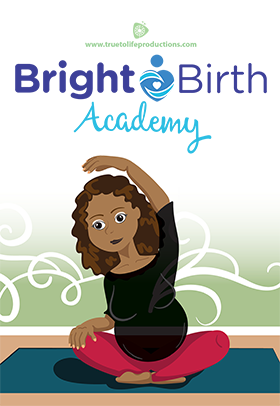

Lesson 2: Your Body & Birth
THREE MINUTE RECAP.
SENSITIVE MATERIAL Your body was designed to give birth. In lesson two, you’ll learn how your anatomy works with hormones to move your baby from your uterus, through the birth canal, and into your arms. This happens in four stages, called the stages of labor. Purchase optional Facilitator Guides and Participants Workbooks here. Topics include: Reproductive system, Hormones, Signs of Labor, Stages of Labor, Uterus, Amniotic Sac, Placenta, Pelvis, Vagina, Braxton Hicks Contractions, Preterm Labor, Lightening, Mucus Plug, Water Breaking, Lower Back Pain, Early Phase, Active phase, Transition phase, Pushing, Postpartum, Apgar Score, Oxytocin, Melatonin, Adrenaline, Room Environment, BrightBirth
Closed Captions: English/Spanish
FactSheet


Lesson 3: Pain & Natural Birth
THREE MINUTE RECAP.
Doesn’t natural birth hurt?! Well, the honest answer is “Yes,” but labor pain is much different than the pain of breaking a bone or stubbing your toe. Labor pain is valuable and works to notify your body to release hormones that move labor along. This lesson will look at pain, the benefits of natural birth, and the various ways to relieve pain naturally. This information will help you consider if a natural birth is for you. Purchase optional Facilitator Guides and Participants Workbooks here. Topics Include: Natural Birth, Cervix, Pelvis, Labor, Contractions, P.A.I.N., Relaxation, Rhythm, Ritual, The Gate Theory, Support People, Comfort Techniques, Coping Techniques, Focused Breathing, Deep Breathing, Focal Point, Visualization, Massage, Counterpressure, Double Hip Squeeze, Sifting, Positions, Birth Ball, Birth Peanut, Slow Dancing, Squatting, Hydrotherapy, Room Environment, BrightBirth
Closed Captions: English/Spanish
FactSheet
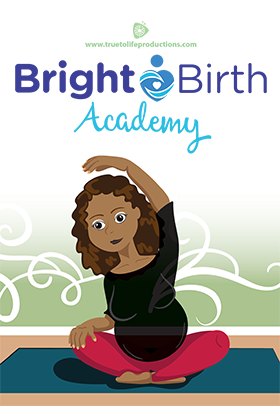

Lesson 4: B.R.A.I.N. & Decision Making
THREE MINUTE RECAP.
You may be faced with difficult decisions during birth. Labor may not be progressing as quickly as your doctor would like. Or what do you do if pain medicine is offered that wasn’t part of your birth plan? What if your doctor recommends a cesarean? Making important decisions is tough, and having the right tool to help you do it is important. Cue the B.R.A.I.N. method. This five-part decision-making tool will help you narrow down the information you need during labor to make the best well-informed decision for you and your baby. Purchase optional Facilitator Guides and Participants Workbooks here. Topics Include: B.R.A.I.N., Benefits, Risks, Alternatives, Intuition, No or Not now, Asking Questions, Labor, Delivery, BrightBirth
Closed Captions: English/Spanish ©2021
FactSheet
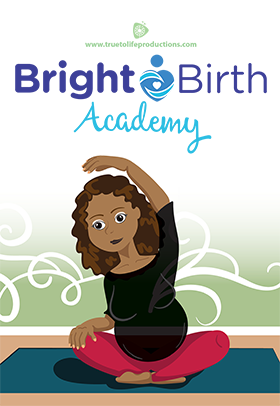

Lesson 5: Medical Pain Relief, Interventions, and Procedures
THREE MINUTE RECAP.
An unmedicated birth may not be for every mom, or you might change your mind as labor progresses. Even if you plan for an all-natural birth, some medical situations may come up that need to be addressed. This lesson will cover the various medical pain relief options—from taking the edge off to removing most of the pain, and the various medical interventions and procedures you might encounter during labor. Purchase optional Facilitator Guides and Participants Workbooks here. Topics Include: Medical Pain Relief, Interventions, Procedures, Labor, Delivery, Epidural, Pitocin, IV Insertion, Group B Strep, Hydration, Oxygen, Monitoring, Sweeping Membranes, Prostaglandins, Foley Catheter, Breaking Water, Episiotomy, Forceps, Vacuum, Narcotics, Nitrous Oxide, Acupuncture, Sterile Water Injections, Managing Pain, BrightBirth
Closed Captions: English/Spanish ©2021
FactSheet
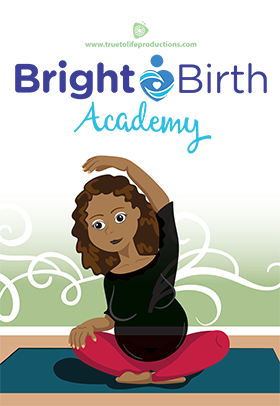

Lesson 6: Planning for Birth
THREE MINUTE RECAP.
The best way to help your labor go the way you would like is by coming up with a birth plan. Your birth plan will help inform the nurses, doctors, and support people of your wishes during and after birth. This lesson will discuss several things you should consider when writing your birth plan, such as how you wish to manage pain, delayed cord clamping, skin-to-skin contact after birth, and so much more. Purchase optional Facilitator Guides and Participants Workbooks here. Topics Include: Labor, Delivery, Birth, Birth Plan, Support People, Pain Medication Preference Scale, Postpartum, Baby Bath, Breastfeeding, Vitamin K shot, Antibiotic Eye Ointment, Circumcision, Placenta Delivery, BrightBirth
Closed Captions: English/Spanish ©2021
FactSheet
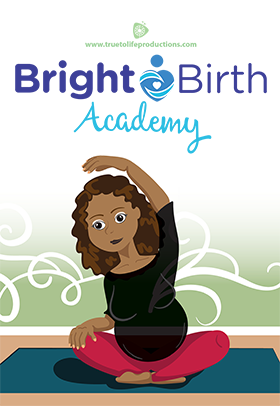

Lesson 7: Postpartum
THREE MINUTE RECAP.
Congratulations! Your baby is born! At least hypothetically. This final session will instruct you on the postpartum period (after birth). You’ll learn what to expect in the hospital or birthing center in the hours and days following birth, and what you can expect in the first few weeks at home. Real moms also offer tips and share about the things they wish they had done differently or had known about after labor and delivery. You’ll finish this class feeling excited and ready to meet your baby and be empowered to have the best birth possible. Purchase optional Facilitator Guides and Participants Workbooks here. Topics Include: Postpartum, Feeding, Skin to Skin, Breast Crawl, Blood Sugar Level, Genetic Screening, Hearing Screening, PKU Screening, Jaundice Screening, Monitoring, Lochia, Fluctuating Emotions, Postpartum Depression, Postpartum Anxiety, Taking Baby Home, BrightBirth
Closed Captions: English/Spanish ©2021
FactSheet


Taking Care of Yourself after Childbirth
THREE MINUTE RECAP.
Women are often taught to consider the needs of others before their own. After giving birth, it is critical for a woman to take good care of herself so that she is better equipped to care for her newborn. Things like postpartum healing, rest, nutrition, exercise, and knowing how to handle the baby blues help her settle into her new role as a mom. This video will share tips on what to expect after giving birth and how a postpartum woman can take great care of herself. Topics include: postpartum healing • vaginal discharge • postpartum contractions • sore muscles • hemorrhoids • breast leaking • breast engorgement • vaginal recovery • c-section recovery • caesarean recovery • rest • sleep • nutrition • constipation • postpartum exercise • Kegel exercises • emotions • PPD • postpartum depression • baby blues • returning to work. Closed Captioning English Medically reviewed May 2024 ©2016
FactSheet
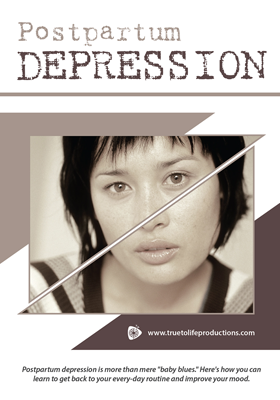

Postpartum Depression
THREE MINUTE RECAP.
Pregnancy and birth are supposed to be a joyful time, with the excitement of parenthood and a new baby, dreams of your sweet family, and those wonderful bonding moments. But all this may lose some of its joy because of maternal depression and anxiety. This depression or anxiety can begin during pregnancy and worsen after birth. It can be as mild as the “baby blues” or as disabling as postpartum depression or anxiety. This video looks at the “baby blues,” postpartum depression, and the difference between them. We’ll also talk about what to do if you have postpartum depression and some helpful tips on how to function at home and improve your mood. Topics include: third trimester • after birth • blues • sadness • weepiness • sleeping problems • PPD • postpartum depression • postpartum anxiety • PPD causes • PPD symptoms • PPD treatment • PPD psychosis • paranoia • hallucinations • harming the baby. Closed Captioning English Medically Reviewed May 2024 ©2018
FactSheet


Feeding Your Baby: The Bottle
THREE MINUTE RECAP.
How you will feed your baby is an important decision to make. Babies spend three to four hours a day feeding in the earliest days of their lives. Feeding is a special time to bond with your baby. This lesson discusses the cleaning and sanitizing of baby bottles and the preparation of formula based on the packaging instructions. Topics include: • feeding • bottles • nipples • formula • cow’s milk • iron • sanitizing bottles • formula preparation • bottle heating • bottle temperature • feeding schedule • signs of hunger • burping • spit up • rooting reflex • bonding • tooth decay. Closed Captioning English ©2022
FactSheet


Breastfeeding - Getting Started
THREE MINUTE RECAP.
Lesson one of our breastfeeding series Feeding Your Baby: Breastfeeding Getting Started provides the important information needed to prepare yourself for the wonderful world of breastfeeding. You'll hear from medical experts and experienced moms on what to expect and why breastfeeding is a great choice for both mom and baby. The great news is that your body and your baby already know what to do! We will simply help you to understand how to get started and provides some great tips on the breastfeeding experience. Topics include: breastfeeding, mother's milk, natural, biological, supplementing, nursing, immune system, probiotics, bonding, nutrition
English/Spanish ©2022
FactSheet


Breastfeeding - Successful Breastfeeding
THREE MINUTE RECAP.
Feeding Your Baby: Breastfeeding: Successful Breastfeeding discusses how breastfeeding is a natural process but there are ways to enhance your experience for the benefit of both you and your baby. This lesson offers expert medical advice, practical methods, details on techniques of breastfeeding, and valuable real-life interviews from moms just like you! New mom’s often worry if they are doing things correctly and want as much information as possible to feel confident in their breastfeeding role. Don’t worry, you got this! And, this lesson will help you understand ways to promote successful breastfeeding. Topics include: breastfeeding, nursing, time, skin-to-skin contact, latch, position, rooting, smacking, sucking, liquid gold, nutrients, antibodies, foremilk, appetite, cradle hold, cross-cradle hold, football hold, reclining position, laying down position, breasts, feeding cues, rest, cluster feedings, growth spurts
English/Spanish ©2022
FactSheet


Breastfeeding - Problems and Solutions
THREE MINUTE RECAP.
Lesson three in our series Feeding Your Baby: Breastfeeding: Problems and Solutions helps moms when things don’t go as smoothly as planned. Breastfeeding can have its’ ups and downs like most things in life, but there are usually ways to overcome any issues that may arise. We will examine common problems and the solutions that most often work the best to get great breastfeeding back on track. The temporary challenges that sometimes arise with providing your baby natural breast-milk from your body are well worth the rewards that can last a lifetime. Topics include: breastfeeding, nursing, warning signs, skips feeding, breastfeeding problems, engorgement, mastitis, blocked milk duct, thrush, tongue tie, sore nipples, oversupply, undersupply, returning to work
English/Spanish ©2022
FactSheet
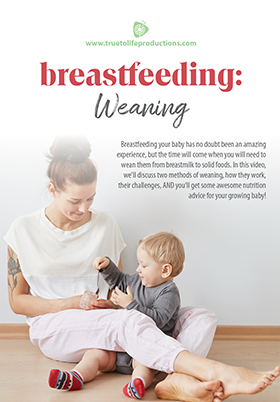

Breastfeeding - Weaning
THREE MINUTE RECAP.
Lesson 4 in our series is Feeding Your Baby: Breastfeeding: Weaning. In nature, healthy things tend to grow. And, while breastfeeding is an amazing season of life, the time comes for your child to take the next step in their development. Weaning is the process of transitioning your child from breast milk to solid foods. We will examine the two main methods of weaning: spoon-led and baby-led. You’ll learn the benefits and challenges of both perspectives, along with helpful expert advice on nutrition and real-life experiences from moms. Topics include: weaning, baby-led, spoon-led, solid foods, breast milk, nutrition, food sensitivities, food allergies, baby's stools, gagging, choking, and iron
English/Spanish ©2022
FactSheet
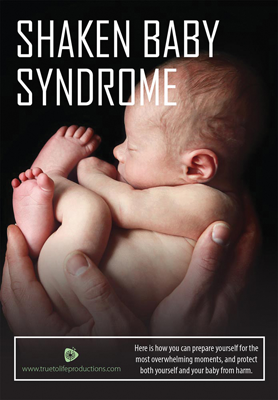

Shaken Baby Syndrome
THREE MINUTE RECAP.
You’ve seen the stories in the news of babies who’ve been violently shaken and then died from their injuries. Most of us think, Not me! I would never do that! There are very few people who set out to hurt a baby. But when you are at your wits’ end, your actions can become chaotic and extreme, and sadly, sometimes it ends with a baby being shaken violently. Learn the three things you need to do to protect your baby and yourself, and what to do if things go too far. Topics include: third trimester • after birth • abusive head trauma • AHT • shaking a baby • crying • inconsolable crying • violent shake • soothing • caregivers • risks • death • disabilities. Closed Captioning English/Spanish ©2019
FactSheet


Eye Contact Means Love
THREE MINUTE RECAP.
Eye contact is considerably more important to us throughout our lives than we may imagine. Even as infants, it is key to the process of establishing emotional bonds with family. This video explores the development that is supported and the bonding that is encouraged through the intentional use of up-close eye contact. Topics include: • eye contact • communication • emotional needs • love • disapproval • failure-to-thrive syndrome • learning • newborn • visual development • brain coupling • developmental disability • social skills • bonding • connection. Closed Captions ©2021
FactSheet


Infant Temperament
THREE MINUTE RECAP.
The basic needs of most babies are the same, but each baby has a unique temperament. This video looks at the different types of temperament and helps you understand the natural differences that can be cherished in each child. Topics include: • temperament • home environment • emotions • reading baby signals • colic • brain development. Closed Captioning English ©2022
FactSheet


The Importance of Bonding
THREE MINUTE RECAP.
The love bond between child and parent is the foundation upon which all discipline, relationships, and self-esteem is based. This video instructs on the importance of both bonding and good practices to promote bonding between infants and parents. Topics include: • bonding • nurturing • comforting • emotional development • mental development • communication • brain development • mother’s voice • five senses. Closed Captioning English/Spanish ©2022
FactSheet


Infant Expectations
THREE MINUTE RECAP.
The first hours, days, and weeks with your newborn baby can be overwhelming. There is so much to learn and know! What will my baby look like? What is normal? What kind of behaviors can I expect? Should my baby really sleep so much? Why does my baby cry so much? Is it colic? What if there are complications? What is the right treatment? This video will help new mothers know what to expect from their newborn child and equip them to make the transition from pregnancy to parenting a newborn. Topics include: newborn • appearance • vernix • skin-to-skin • lanugo • rashes • blotches • white spots • umbilical cord • weak neck • holding baby • first day • awake • alert • vision • sleep • eat • latching • coming home • car seat • normal behaviors • sleeping • feeding • breathing • crying • colic • reflexes • sucking reflex • grasp reflex • first bowel movement • stool • jaundice • bilirubin • phototherapy • weight loss • dehydration • infection. Closed Captioning English Medically Reviewed July 2024 ©2016
FactSheet


Infant Hygiene
THREE MINUTE RECAP.
Caring for an infant does not require vast amounts of training or an advanced degree. Caring for an infant simply requires a dedicated parent willing to respond to a child’s needs in appropriate ways. This video provides standard techniques of care that will help parents provide for their infant’s day-to-day hygiene needs. Topics include: newborn • diapering • cloth diapers • disposable diapers • diaper rash • umbilical stump and diapering • bath basics • water temp • bath frequency • bath safety • clipping fingernails • clipping toenails • skincare • newborn skin • sunscreen • baby hair • cradle cap • umbilical care • umbilical stump • infection • circumcision care • non-circumcision care • penis care. Closed Captioning English Medically Reviewed July 2024 ©2016
FactSheet


Simple Infant Care
THREE MINUTE RECAP.
Many less-common but important topics of infant care are often not discussed, particularly from a researched and documented position. This video will provide mothers with information on a variety of less-common subjects that are important to the well-being of their children. Some of these include how to hold a newborn, techniques for soothing a crying baby, bed sharing, burping, infant walkers, pacifiers, and more. Each section is based on research and professional recommendations by leading medical organizations. After watching this video, new parents will be able to make informed and study-based choices in each subject for the care of their newborns. Topics include: newborn • bed-sharing • co-sleeping • SIDS • sudden infant death syndrome • room-sharing • crying • crying checklist • crying spells • soothing • swaddling • skin-to-skin • pacifier • burping • spit up • vomiting • holding • supporting neck • infant carriers • check carrier • back carrier • car seat carriers • infant walkers • dressing infant. Closed Captioning English ©2016
FactSheet


Premature Birth
THREE MINUTE RECAP.
When a baby is born before 37 weeks, it’s called a premature or pre-term birth, and these babies are often called “preemies.” In this lesson, you’ll learn about what premature birth means, why it happens, and how it can affect a baby’s health and growth. About 1 in 10 babies in the U.S. is born early, and the earlier a baby is born, the more health challenges they might face, like trouble breathing or staying warm. You’ll also discover risk factors, such as smoking or certain health conditions, and how to lower those risks with healthy habits like eating well and going to doctor visits. Topics Include: Pre-term labor · NICU · Prematurity · Bonding · Preemie ·Neonatal · Infant health · Early delivery · Low birth weight
FactSheet
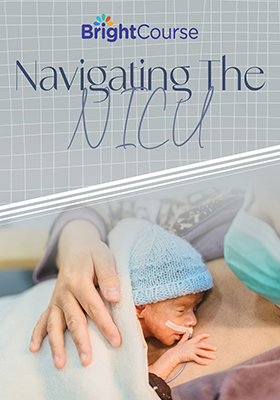

Navigating the NICU
THREE MINUTE RECAP.
This lesson explores the Neonatal Intensive Care Unit (NICU), a specialized hospital area for newborns needing extra care, such as those born before 37 weeks, under 5.5 pounds, or with health complications. Learn about NICU essentials—keeping babies warm, nourished, and infection-free—and how technology gives babies born at 25 weeks a 82% survival chance. Discover practical ways to support your baby, like attending feedings, promoting restful sleep, and practicing kangaroo care to regulate their temperature and oxygen. Explore feeding tips, including the benefits of breastmilk and non-nutritive breastfeeding. The lesson also addresses parental self-care, emotional challenges, and recognizing postpartum depression. Finally, it covers discharge plans, safe sleep guidelines, and the importance of follow-up checkups for your baby’s ongoing care.Topics Include: Pre-term labor · NICU · Prematurity · Bonding · Preemie ·Neonatal · Infant health · Early delivery · Low birth weight
FactSheet


Premature Infant Milestones
THREE MINUTE RECAP.
Learn how to track developmental milestones for premature babies using corrected age, and understand how these milestones differ from those of full-term infants. This lesson covers key milestones from 4 weeks to 2 years—like smiling, rolling, and walking—and offers practical tips to support your preemie’s growth through activities such as tummy time, reading, and interactive play. It also emphasizes the importance of well-child visits, limiting screen time, and knowing when to seek professional guidance. Finally, gain strategies to manage stress, avoid comparisons, and celebrate your baby’s unique progress. Topics Include: Development · NICU · Prematurity · Bonding · Preemie ·Neonatal · Infant health · Tummy Time · Milestones
FactSheet